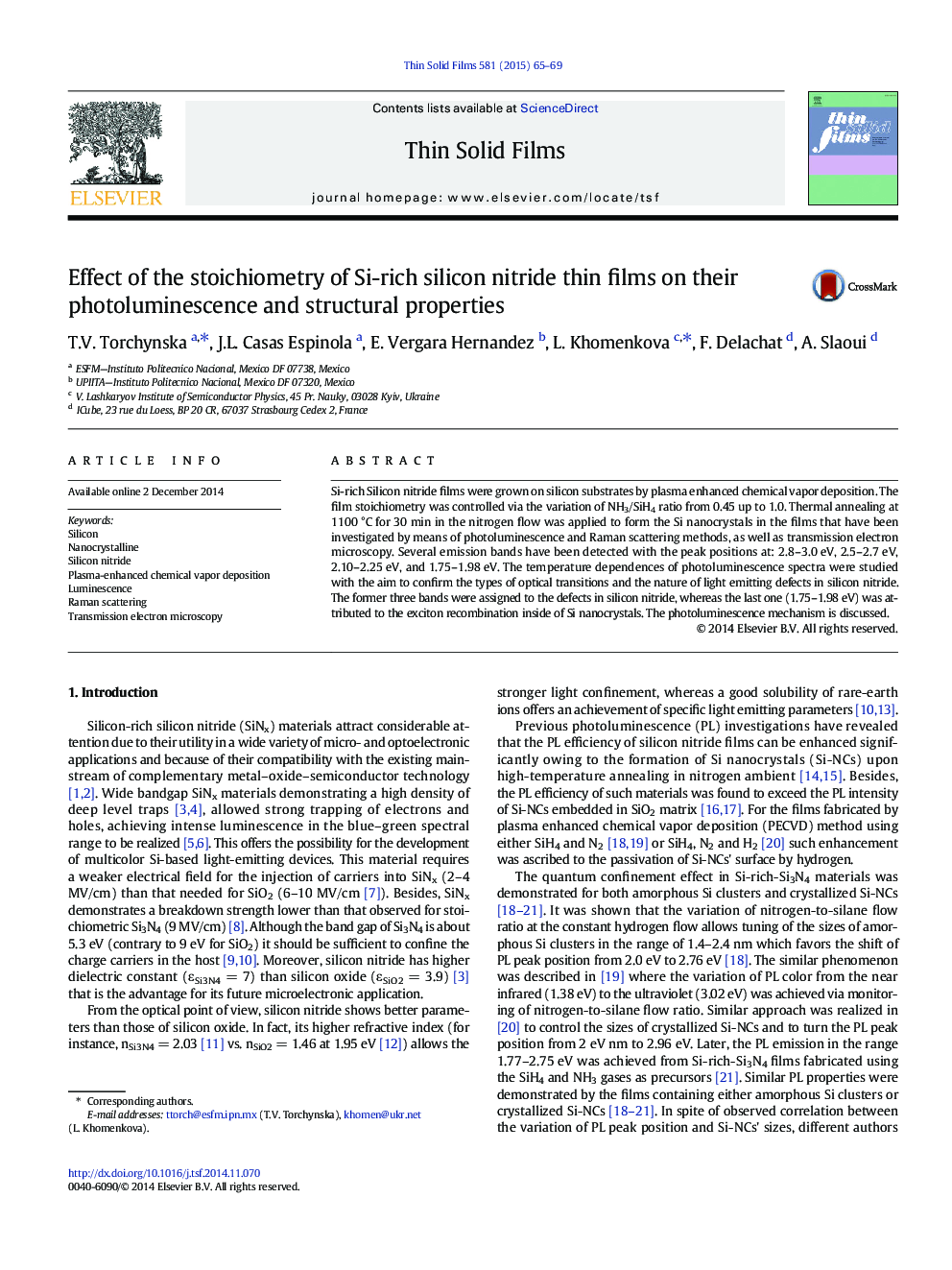| کد مقاله | کد نشریه | سال انتشار | مقاله انگلیسی | نسخه تمام متن |
|---|---|---|---|---|
| 1664801 | 1518024 | 2015 | 5 صفحه PDF | دانلود رایگان |
• Substoichiometric silicon nitride films were grown by PECVD technique.
• The variation of the NH3/SiH4 ratio controls excess Si content in the films.
• Both Si nanocrystals and amorphous Si phase were observed in annealed films.
• Temperature evolution of carrier recombination via Si nanocrystals and host defects
Si-rich Silicon nitride films were grown on silicon substrates by plasma enhanced chemical vapor deposition. The film stoichiometry was controlled via the variation of NH3/SiH4 ratio from 0.45 up to 1.0. Thermal annealing at 1100 °C for 30 min in the nitrogen flow was applied to form the Si nanocrystals in the films that have been investigated by means of photoluminescence and Raman scattering methods, as well as transmission electron microscopy. Several emission bands have been detected with the peak positions at: 2.8–3.0 eV, 2.5–2.7 eV, 2.10–2.25 eV, and 1.75–1.98 eV. The temperature dependences of photoluminescence spectra were studied with the aim to confirm the types of optical transitions and the nature of light emitting defects in silicon nitride. The former three bands were assigned to the defects in silicon nitride, whereas the last one (1.75–1.98 eV) was attributed to the exciton recombination inside of Si nanocrystals. The photoluminescence mechanism is discussed.
Journal: Thin Solid Films - Volume 581, 30 April 2015, Pages 65–69
